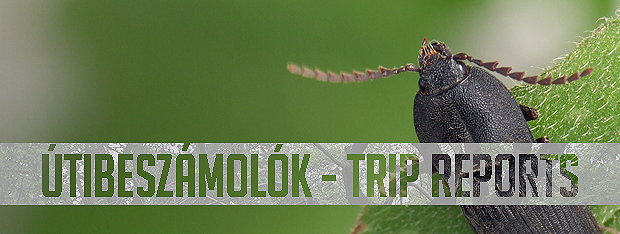
TRIP REPORTS
30.IV.2012., Bakony
This time we headed again
to the Bakony Mountains. Four of us (Petra, Attila, Nikola & I)
arrived at the railway station of Vinye, in the very early morning. The
sun was just came up, and we entered into the really green lime forest.

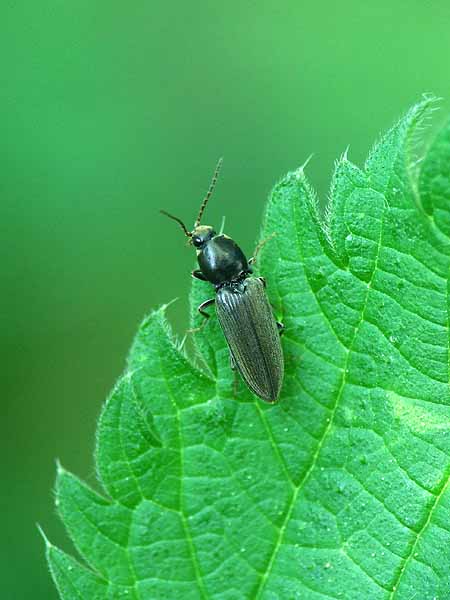
Several beetles were waiting for the rays of sun on the freshly green leaves.
Dicronychus cinereus (Herbst, 1784).
Athous haemorrhoidalis (Fabricius, 1801).
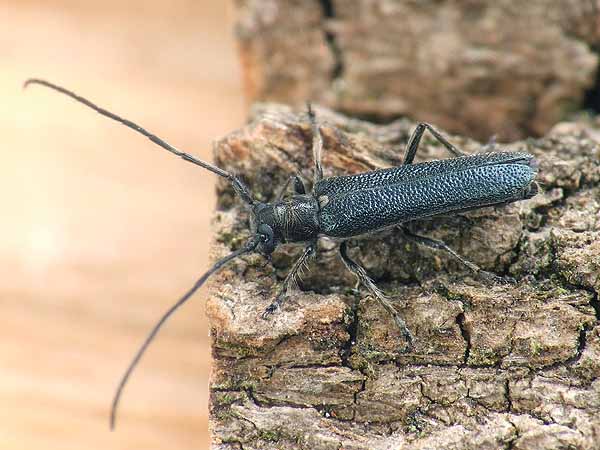
Dozens of Stenostola ferrea (Schrank, 1776) sat on the leaves and branches.
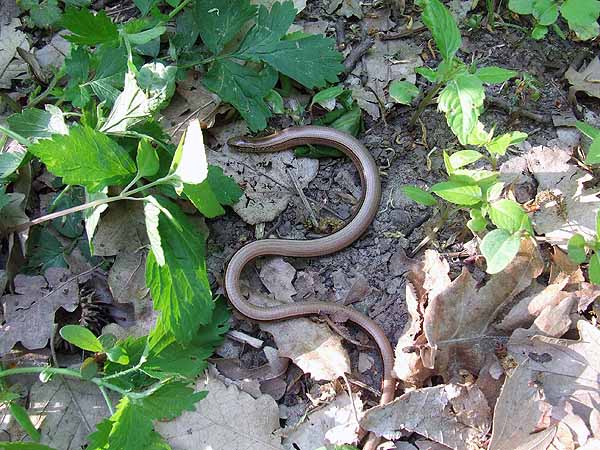

A slow worm (Anguis fragilis) was slowly hunting on the ground for slugs.
As we were walking slowly in the underwood, nice click beetles appeared.
Some of them were sitting on plants, others were slowly flying low.
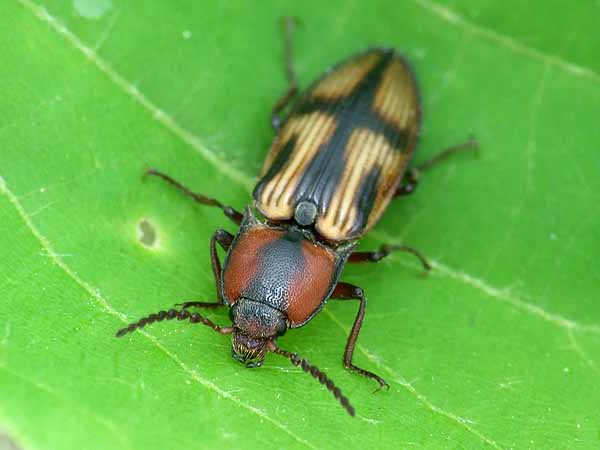
Selatosomus cruciatus (Linnaeus, 1758).
Nikola made short videos about these really handsome beetles.
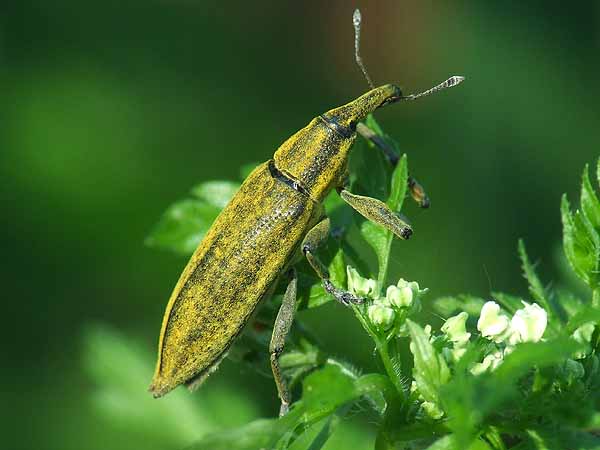
Lixus iridis Olivier, 1807.

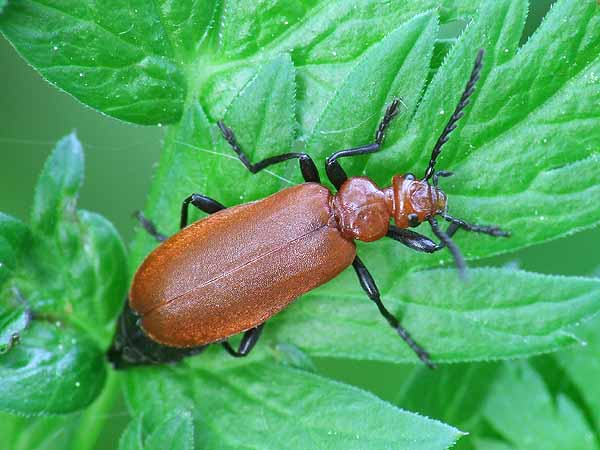
Pyrochroa serraticornis (Scopoli, 1763).

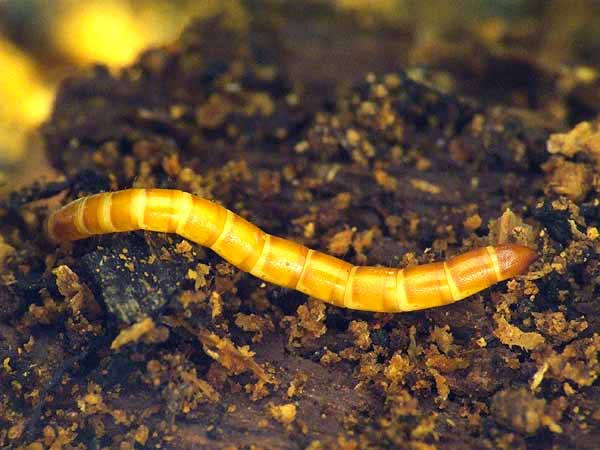
Near to the rails we found a huge woodstack. Inside a hollow beech we found larvae and a dead adult of Megapenthes lugens (Redtenbacher, 1842).
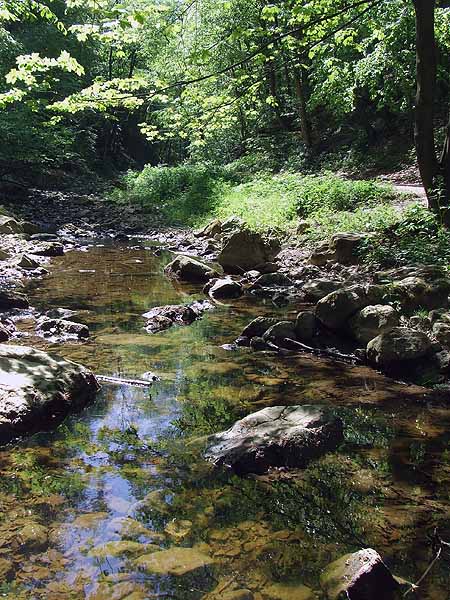
The valley oft he Cuha stream is a
popular tourist destination. We encountered hundreds of humans.

In this rottten beech log we found pupae of Denticollis linearis (Linnaeus, 1758), it was a bit early for collecting them by sweep net.
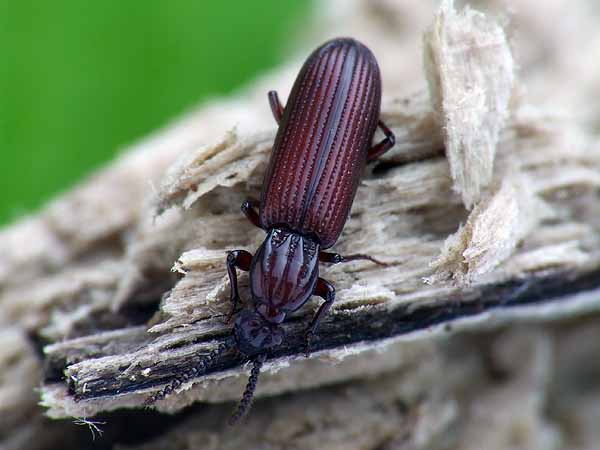
A rare creature I never found before:
the wruinkled bark beetle Rhysodes sulcatus (Fabricius, 1787).

We climbed to the side of the valley,
where the northern and southern slopes meet. Areas like these are
usually good places for beetles. We found remains of Eurythyrea quercus (Herbst, 1780)
which was unknown from the Bakony Mountains.

Some death watch beetles (Anobiidae) were knocked down from dry branches:
Hyperisus plumbeus (Illiger, 1801).
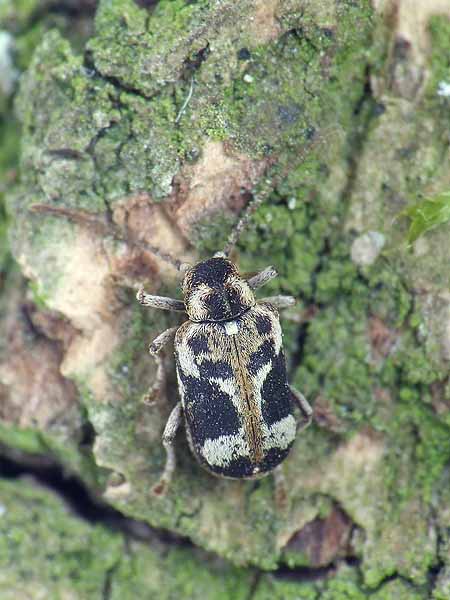
Ptinomorphus imperialis (Linnaeus, 1767).

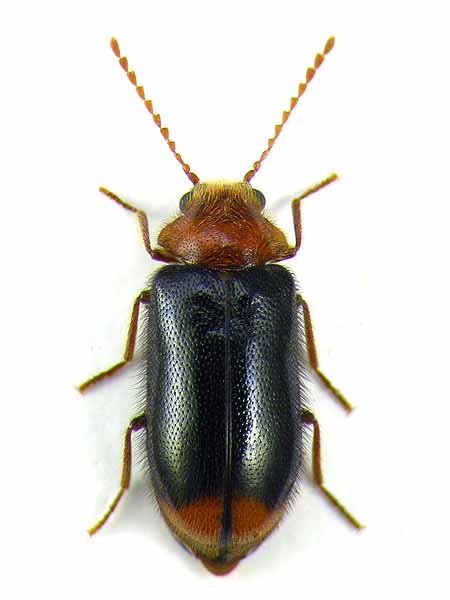
A very rare death watch beetle, which probably lives in branches of maple:
Ochina latreillii (Bonelli, 1809).
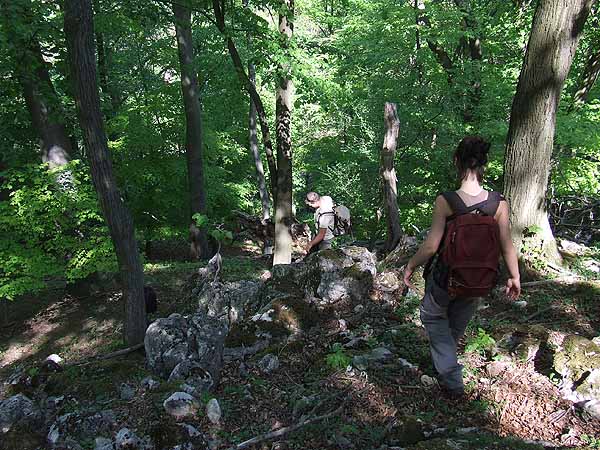
In the afternoon we returned to the valley.
The railway station was full of tourists.
Copyright
©
2009. Hungarian Natural History Museum,
Department of Zoology, Coleoptera Collection